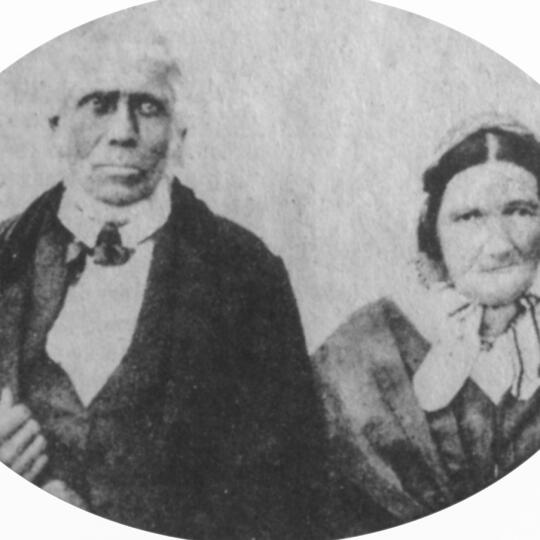The following is an excerpt from “Meet Me At The Dock in Greilickville, Grand Traverse Bay” by author Kathleen Firestone.
Copies of her books are available at local book stores or directly from her.
Seth Norris and his boys built the first bridge across Cedar Lake Creek, the stream that provided power for the Norris and Greilick endeavors. Knowing the need for leather goods, the Norris family opened their tannery for business in 1858, on the north side of the creek near the bay. Arriving pioneer farmers needed a place to grind their grain into flour, and in 1860, John and Charles Norris built a grist mill, just west of the tannery and across the creek from the Greilick sawmill, which became the center of business for nearby and outlying settlers and gained the name of Norristown.
Although no documentation has been found, local historians believe the Norris family built a dock for their use, where the spit of land protrudes just south of Cedar Lake Creek. Such a dock would have been useful in the delivery of hides for the Norris tannery and for grain for the gristmill. Farm wagons were also used as transports. Machinery for the Norrises endeavors would have been delivered by boat.
The pioneer Seth Norris died in 1863 at age 62, 11 years after arriving in the Grand Traverse-Leelanau area. He must have felt some satisfaction at the end of his life, knowing that his sons had a good start in providing for themselves and their own families.
Sons Charles and Martin Norris took ownership and named the leatherworks C&M Tannery. Shoes, boots harnesses and work gloves were produced from the tanned hides and sold in C&M leathergoods store.
In the same year, 1862, Anthony, John and Edward Greilick formed the business of Greilick Brothers, owners of the mill and brewery. John Greilick’s son, Walter served as a log scaler and bookkeeper for Greilick Brothers for two years and later became Elmwood Township treasurer, then clerk and then supervisor. The Greilicks were leaving their mark on Elmwood Township and on Leelanau County.
On Dec. 21, 1863, the Leelanau County Board of Supervisors officially organized the Township of Elmwood. Slightly less than 200 people lived in the township at that time, with the county population being 2,158. Solon Township was created in 1871 reducing the original size of Elmwood and leaving it at 13,715 acres.
The Greilick brewery was built on the south side of present Grandview Road, producing beer and giving the name Brewery Creek to the small stream that flowed there. The creek was diverted into small ponds for cooling the beer. The brewery was not nearly as successful as lumbering, and the Greilicks kept it only a few years, with ownership changing to John Smith and then to Frank Kratochvil, Jr.
Two of Seth and Nancy Norris’ sons, Albert and Charles, did service in the Civil War. Charles enlisted in Company C of the 15th Michigan Infantry on Oct. 27, 1864, two years after his brother Albert enlisted, and also two years after their father had died.
At age 22, in 1862, Albert enlisted in Company H. of the 7th Michigan Cavalry. Though wounded at the Battle of Gettysburg, Albert returned to open a brickyard at Norristown. He bought 40 acres of land from his brother John, in 1864, and began digging into the 25 to 30 foot bank of high quality clay along the east side of Cedar Lake. He built a pugmill, drying shed and kilns on five acres of land. Bricks were produced in several steps, and the Norris brickyard produced after 200,000 bricks per year and employed a dozen men.
The Northport-Newago Road was cleared through Elmwood and the east side of the county in 1862, making travel between Northport and Traverse City much easier. The dirt road, which cut between the Norris’ original house and their second one, also made it possible to move needed goods from place to place. Shipping by boat also continued up and down Grand Traverse Bay.
Greilicks owned a small steamer, Little Western, the first steamer on the Boardman River, July 22, 1869. The Greilick collection at Traverse Area District Library contains several photos of Greilick friends and family enjoying times on the banks of the Boardman.
Families in the early days of Leelanau and Grand Traverse settlements did find time for leisure and entertainment, but work was always waiting when the fun was over. Besides cooki ng, cleaning, and caring for children, the women knit and sewed much of the daily clothing.
A carding mill was added by the Norris men in 1870, near the Norristown grist mill. Carding machines brushed sheep’s wool into rolls, for spinning yard or into batting for quilts.
In 1872, Frederick Hall of Ionia purchased the island in Grand Traverse Bay which he named after his daughter, Marion, and the island became known as Marion Island. This was in Grand Traverse County, not Leelanau, but one has to wonder if there was a relationship between Frederick Hall and Seth Hall Norris. The island was highly visible up the bay from where the Norris family settled in Leelanau County.









